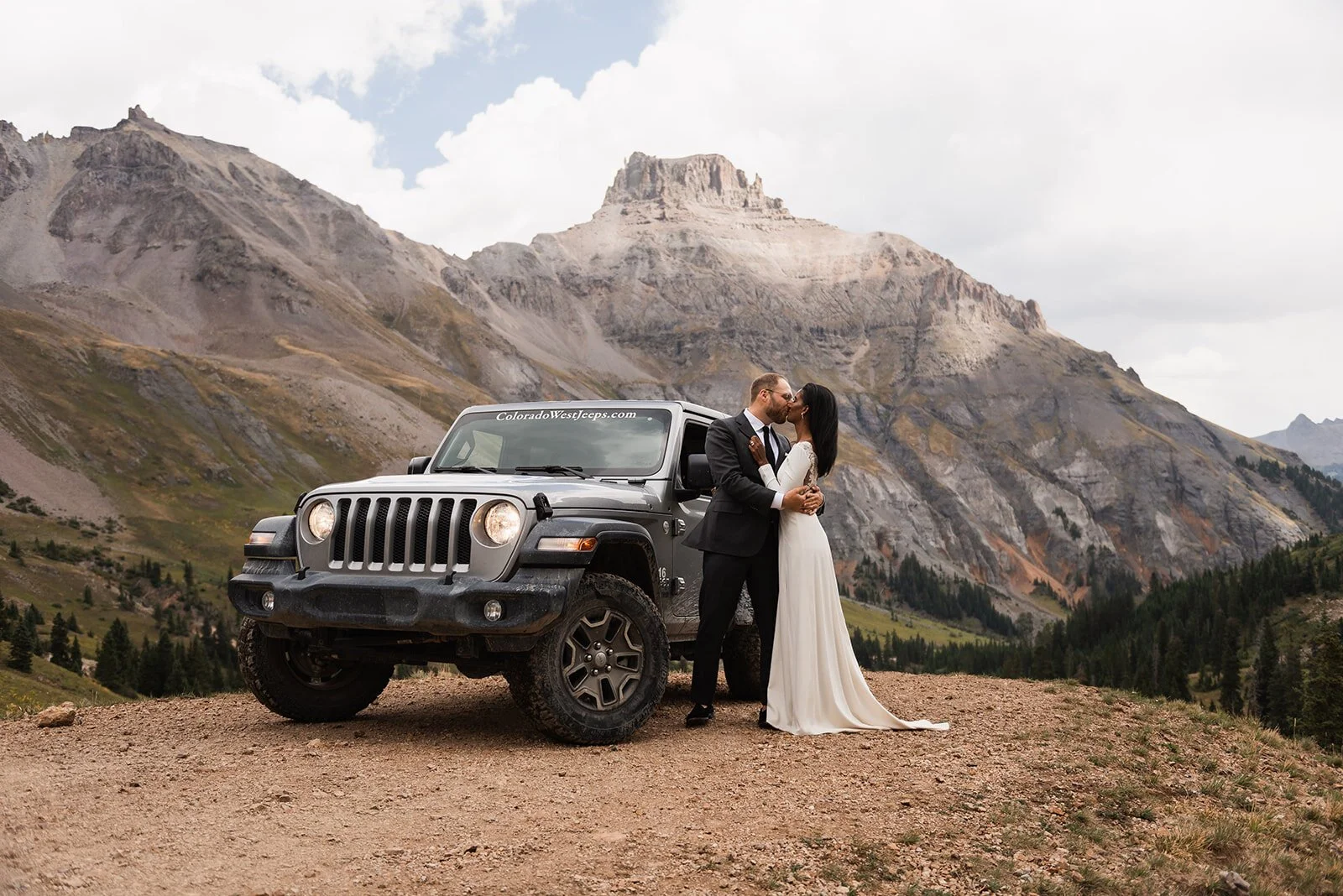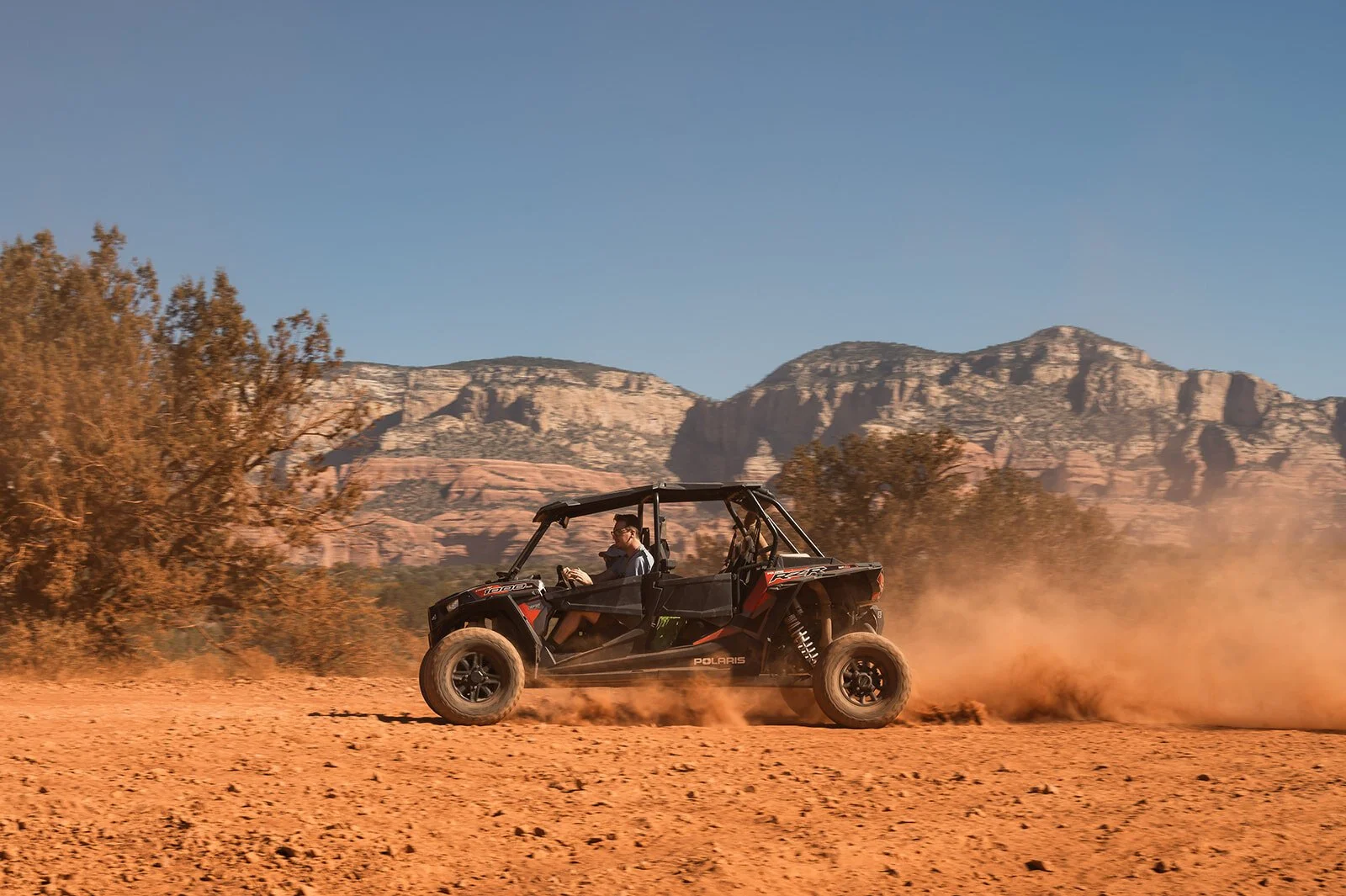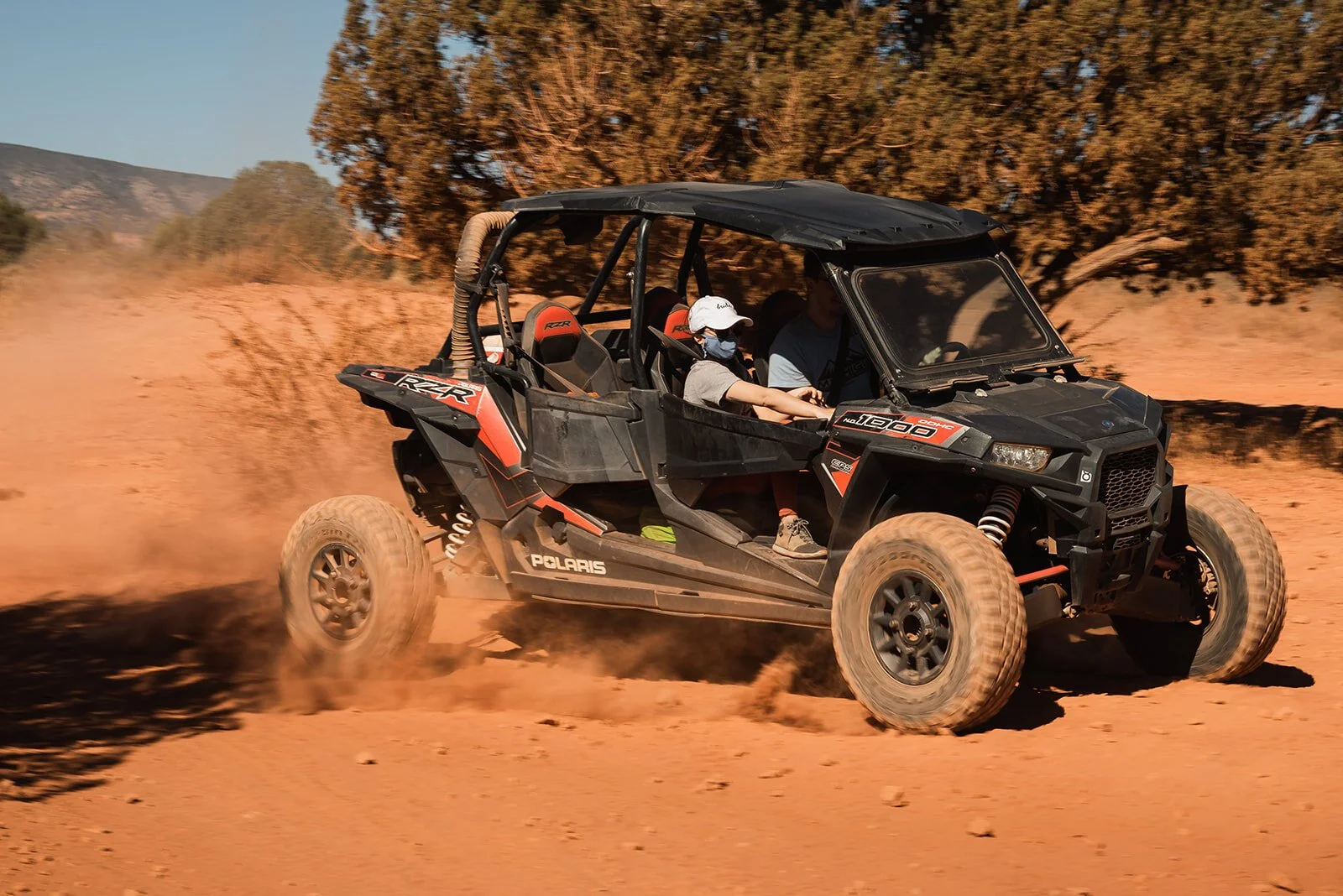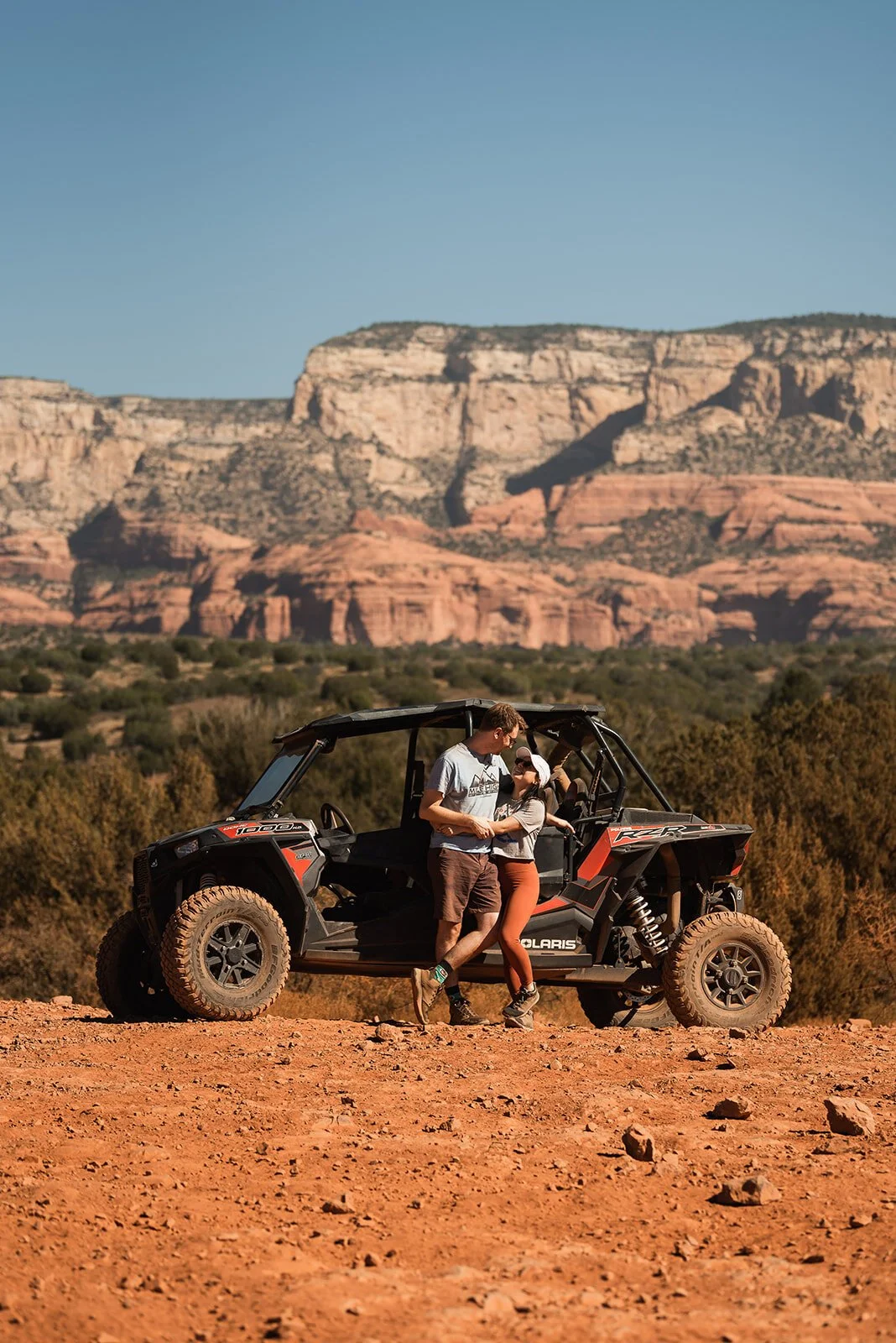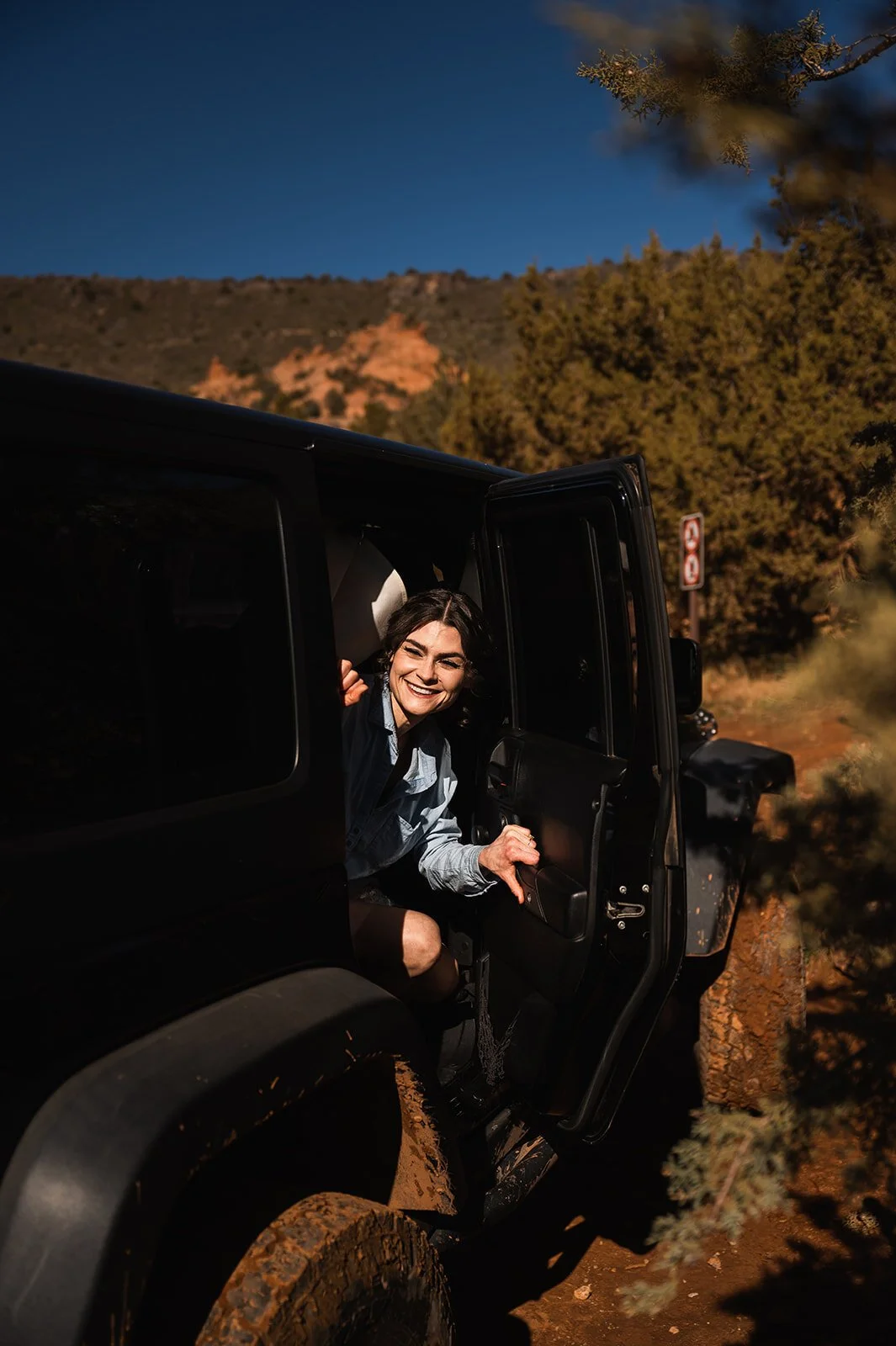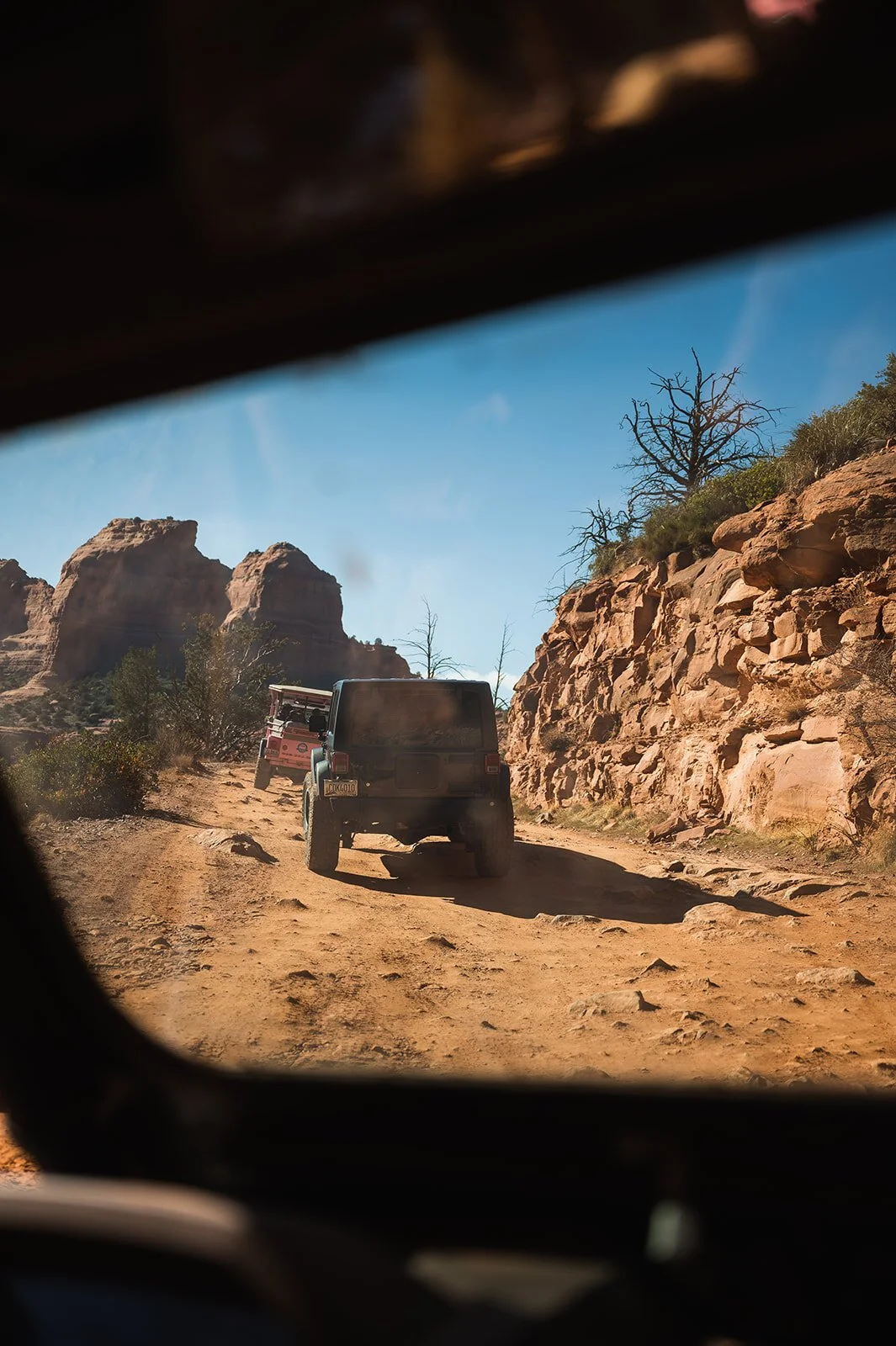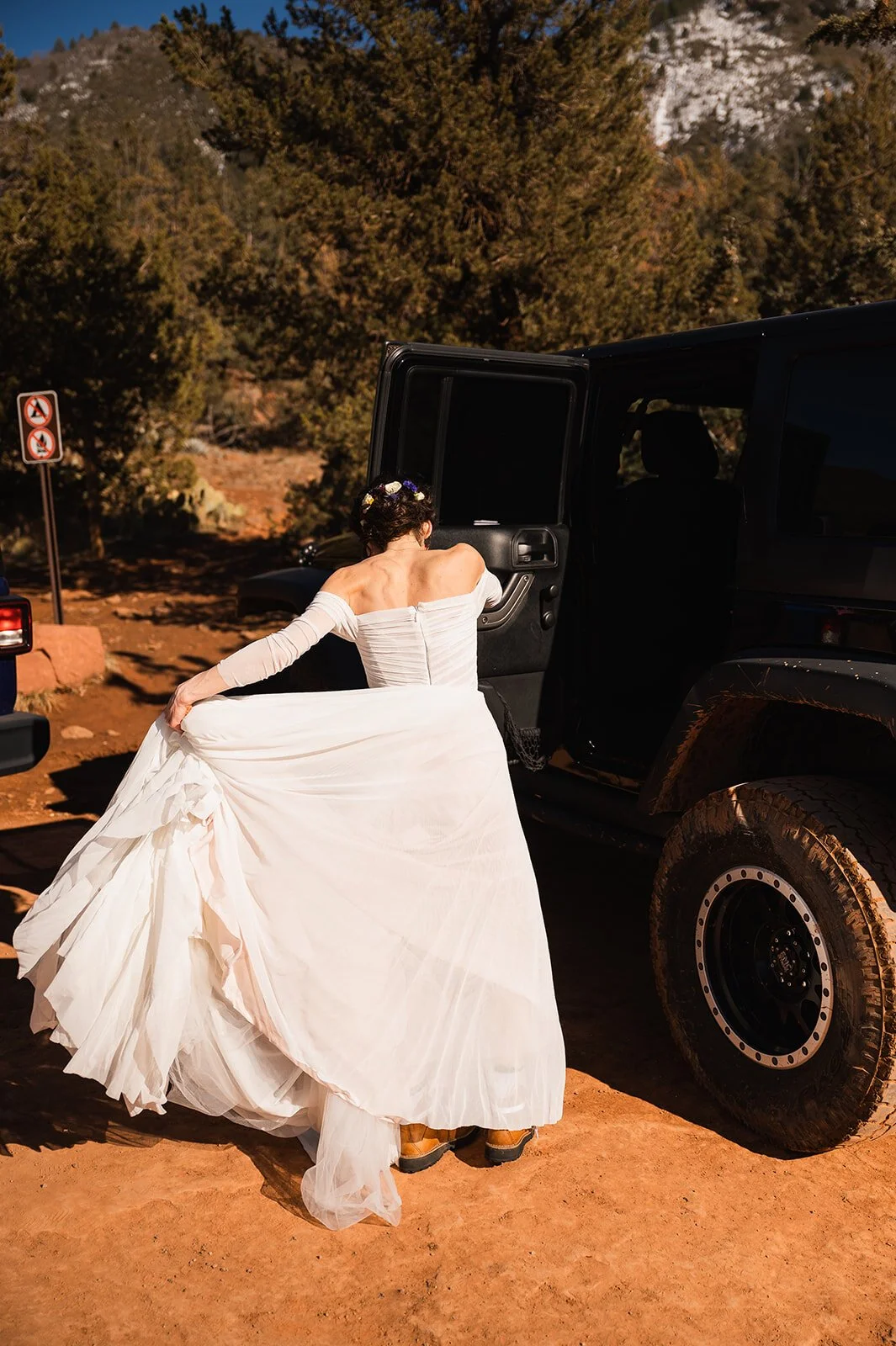Off-roading Elopements
Intro
You’ve seen the pictures, you’ve done some dreaming, had some long conversations, and you’ve already decided on an adventure elopement — hell yeah — but you’re thinking you’d like some real privacy for your ceremony, or you’re looking to really get out somewhere awesome without a wicked hike, or you have a few guests that probably couldn’t manage a serious hike to your ceremony spot.
Or maybe you just want to rip around the desert in a Razer and have some fun on the morning of your wedding.
Here’s where an off-roading elopement comes in.
Practical, fun, and definitely adventurous — let’s dig into how it could look!
What is an Off-Roading Wedding?
The name’s right-on here — it’s integrating some sort of off-roading into your wedding day.
This could be in Jeeps, in RZRs, or on ATVs. Sometimes just an SUV with all-wheel drive is enough. And in the winter, snowmobiles are an absolute blast and make quick work of snowy trails.
It can be practical: Picture Jeeping up a high mountain pass to reach a remote ceremony location.
Or just for fun: we’ve had couples rip donuts in the desert the morning of their wedding, break for showers and lunch (and maybe a power nap), and then hop into their wedding clothes for a gorgeous sunset ceremony on a bluff.
It really comes down to incorporating it in a way that feels meaningful, sounds fun, and suits your skill level too.
Who is this for?
Anyone that’s drawn to it!
We’re firm believers that with guidance and basic preparation, there’s a way to get off-road safely no matter your skill level.
From dirt roads in Colorado and Utah that most folks could explore in an AWD SUV, all the way to challenging routes that require a high-clearance Jeep or side-by-side to tackle. Driving yourselves is really a big part of the fun, but hiring a professional driver or booking a tour are options too!
Safety first
Importantly, we don’t take clients on risky or super challenging excursions, nor do we take on clients that plan to do risky or super challenging excursions on their wedding day. We keep it chill, keep it safe, on moderate or easier trails, for two main reasons:
One: It’s difficult to accurately judge off-roading skill level. The last thing we want is to have a couple find themselves way over their heads on a difficult trail. This would probably be super stressful, if not dangerous. And avoiding stress is what we’re all about. Also avoiding danger is what we’re all about.
Two: We’ve done this a ton, but we’re not professionals. Mistakes and mishaps, if they happen, are just way easier to manage and more rare on easier trails.
Our couples have had an insane amount of fun alongside us, even while mitigating risks, keeping speeds in check, and practicing proper trail etiquette, all on easy-to-moderate trails. We’re gonna make sure that whatever we do, wherever we go, you’ll feel comfortable and have some fun.
How do you plan these?
First things first: Pick a location! We’d suggest starting with choosing between the desert and the mountains. Both are incredible in their own ways and there’s no wrong answer!
We’re happy to help narrow that choice down, and then help you find an incredible spot that fits your experience level and the vibe you’re going for — whether it’s in the mountains of Colorado, or the deserts of Sedona or Utah. Other good resources for finding routes include AllTrails, off-roading/OHV online forums/groups, Reddit, and YouTube!
Book your rental. You’ll want to do this as soon as you figure out your location. You definitely don’t want to sleep on this, especially during peak travel season! On holidays and weekends many places book out all their reservations in advance. The sooner you book your rental, the more likely you are to get the reservation you want.
Important note: do not take a traditional rental car (from Enterprise, the airport, etc), even if it happens to be a Jeep, on an off-road or OHV route. It’s usually against traditional rental agreements and could mean serious fines if anything happens to it out there — and things can happen! Stick with dedicated off-roading rental centers. We’ve got so many great vendor suggestions that we pass along in the planning process.
If you’re wondering what kind of off-roading vehicle you should rent, you can ask us that too. There are lots of options, and your best option will depend on the experience you are looking for and your skill level.
Get equipped. Outdoor centers can hook you up with maps, coolers, suggestions for routes, or other things to see in the area. As your adventure elopement photographers, we’ll guide you through the process as much as we can, but don’t be afraid to tap into the other resources available to you. The staff at outdoor centers are generally super helpful!
What should you bring?
It depends a bit on the kind of vehicle you’re in, but there are a few things you’re gonna want to bring at a minimum.
In exposed off-road vehicles (RZR, ATV, open-air Jeep):
A bandana, buff, or other face covering to keep sand/dirt/mud off your face (and out of your teeth)
Sunglasses or goggles
Foam ear plugs (we use the orange ones from 3M): most exposed off-road vehicles are pretty damn loud and ear plugs allow you to hear what you need to and filter out what you don’t. Makes the whole thing so much more chill!
Sunscreen
For all vehicles:
Water
Snacks
Clothing/layers (for warmth, water-proofing)
Hiking boots! Between getting out to assess obstacles and hiking around, this is a great idea (even in a Jeep)
As with any adventure, it’s not a bad idea to let someone know where you’re going and have some sort of emergency beacon if you’re really getting out there (these are sometimes provided by off-roading centers). A walkie talkie can help out in a bind.
What not to bring:
Do not bring alcohol of any kind. When you’re off-roading, you give up the option of popping champagne, taking sips of whiskey, or having summit beers. Besides being against all off-roading rental agreements, this is part of the whole better-safe-than-sorry thing. We’re serious here!
General off-roading tips
Take it slow at first, until you’re comfortable
Pick your line: avoid large rocks, ruts, edges
Stay on marked trails and don’t trample vegetation (important if turning around)
Right of way: drive on the right, and give preference to folks coming uphill
G.O.A.L. — Get out and look! There are going to be times when you literally can’t see where you’re supposed to go to avoid an obstacle. Hop out, have a look, plan your route, and hop back in.
Rule of thumb: yield to anyone with less maneuverability than you have
Be mindful of hikers, mountain bikers, and animals: slow way down for all of these
Avoid high-centering (getting the center of your vehicle stuck on an obstacle taller than your clearance)
Communicate with other drivers: let passing drivers know how many people are behind you in your party by flashing a number with your hand (helps on blind corners, emergencies).
If you’re going from road to trail, be very cautious in general and follow speed limits
Blind corners: assume someone is going to come around the corner in your lane. Leave room, slow way down, and use your horn if you want to let folks know you’re there
Bonus tip: once you’re finished off-roading (especially in a RZR), driving your own car can feel super weird. You’re so used to manhandling the off-road vehicle that driving a cushy car can take some getting used to. Take it slow to allow your body and brain time to re-adjust!
When’s the best time to do this?
Depends on where you’re headed!
Colorado & other mountainous areas: June through September is your best bet. This is when there’s less likelihood of rain and snow and the routes are probably all opened up. These are peak travel months for this reason!
Moab/Sedona: We definitely recommend planning for the spring, fall and winter months! That way you can beat the heat and crowds of summer.
What about time of day? We say any time of day is good, but you’ll want to be below treeline around noon if your spot is prone to thunderstorms. You’ll also want to be past the trickiest sections on your way back before dark. Mornings are great ways to beat crowds and heat, and the light is great for photos too.
How do we make this happen?!
If this all sounds super fun, reach out by hitting that button below — we love this stuff and we bet you will too!

